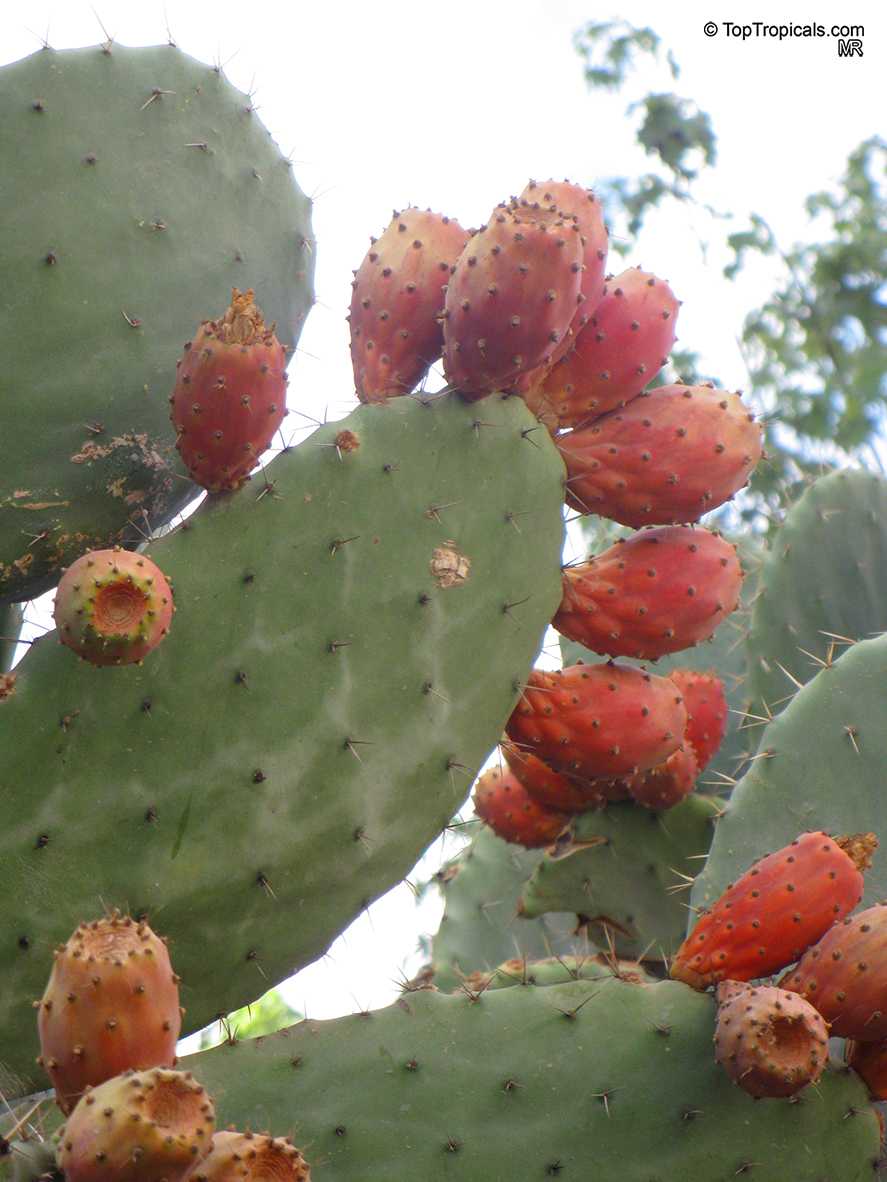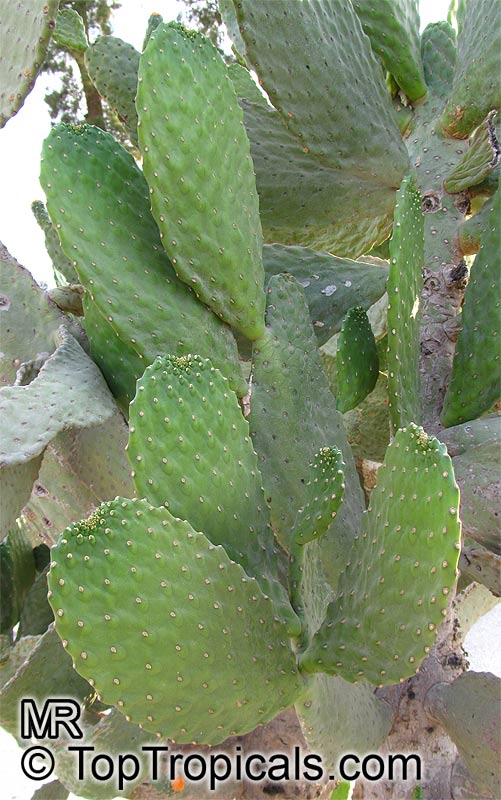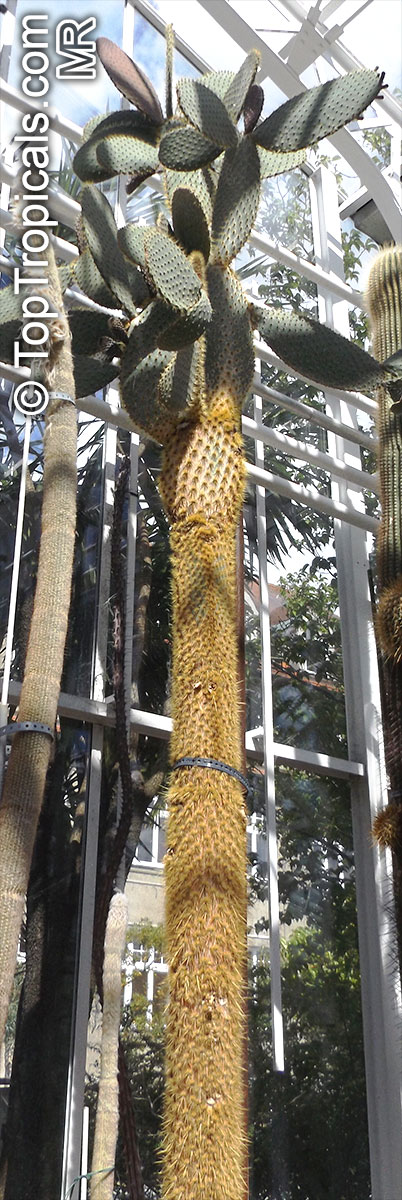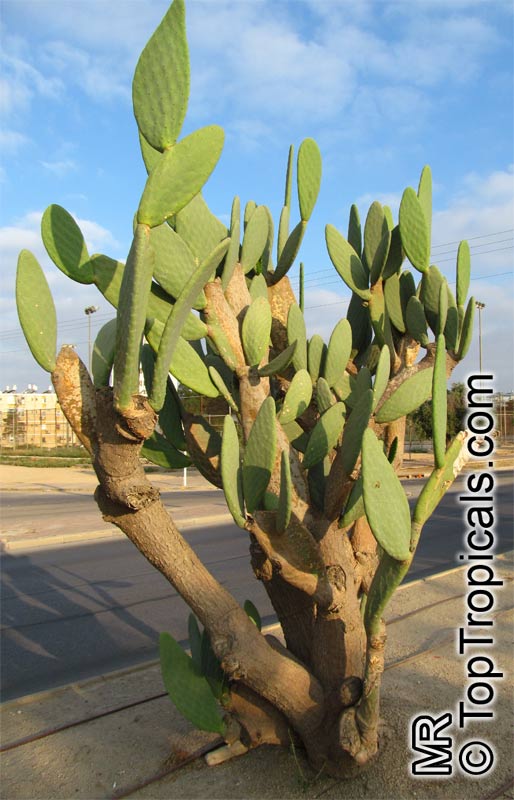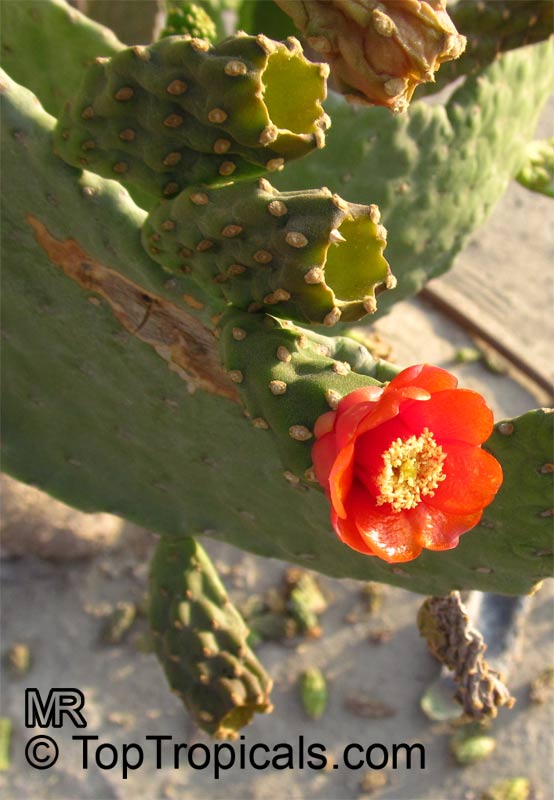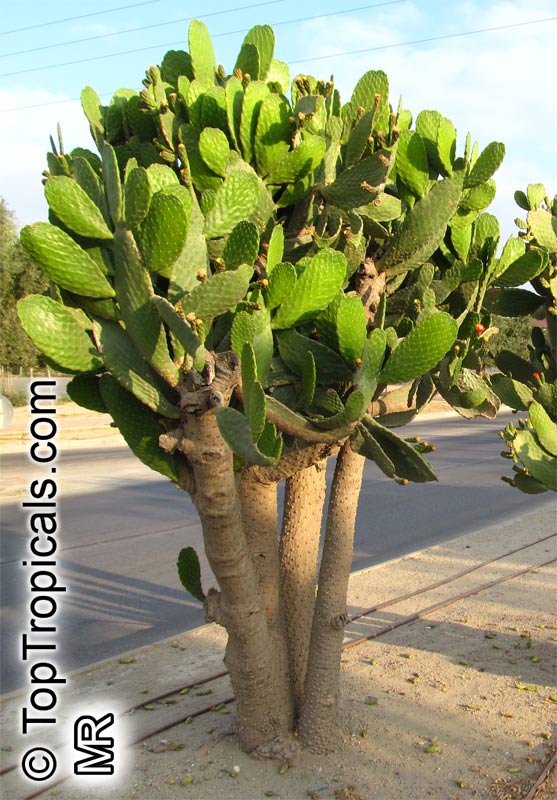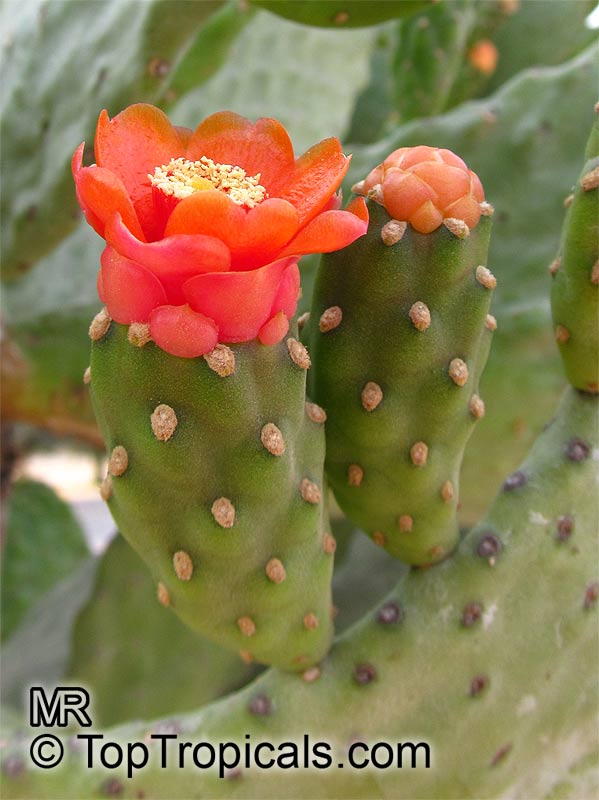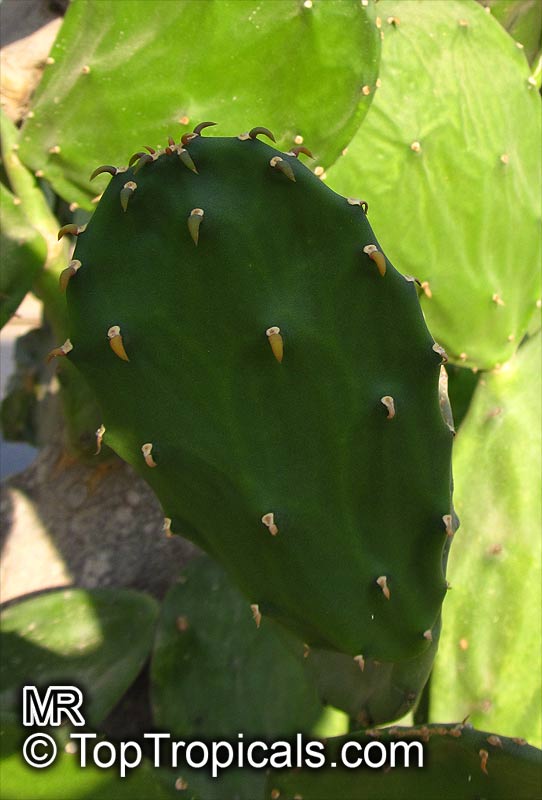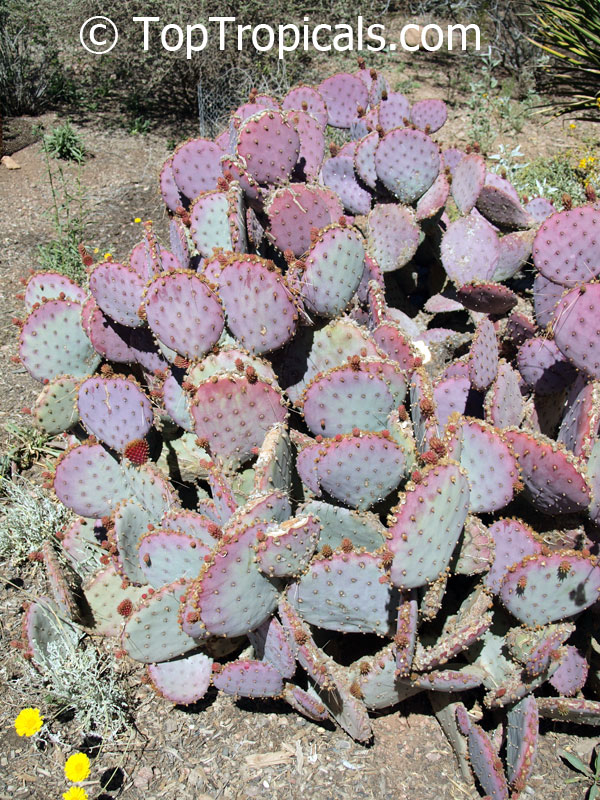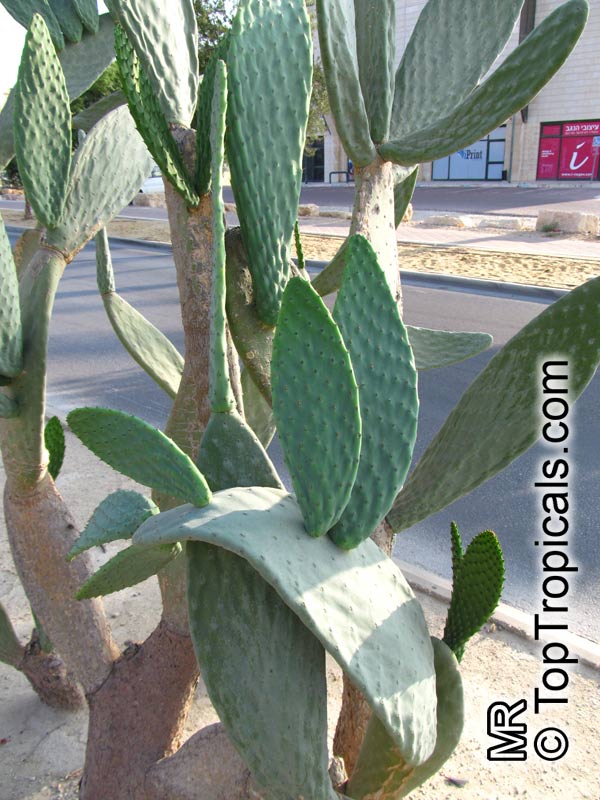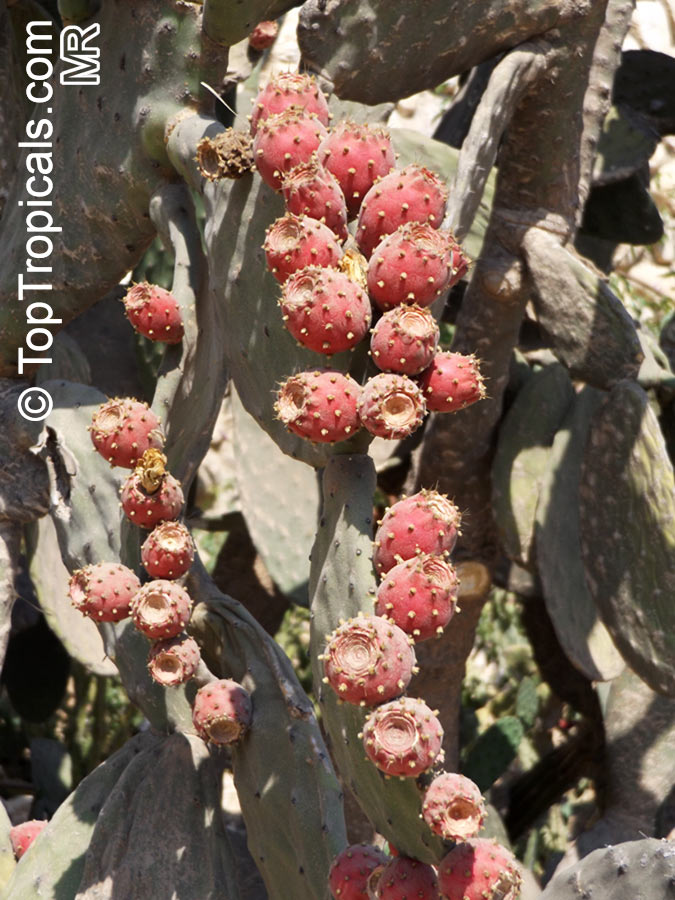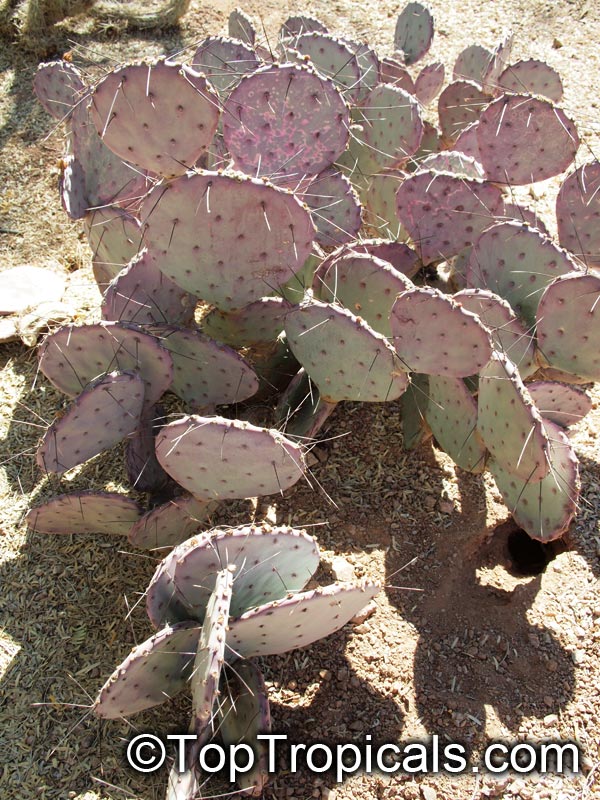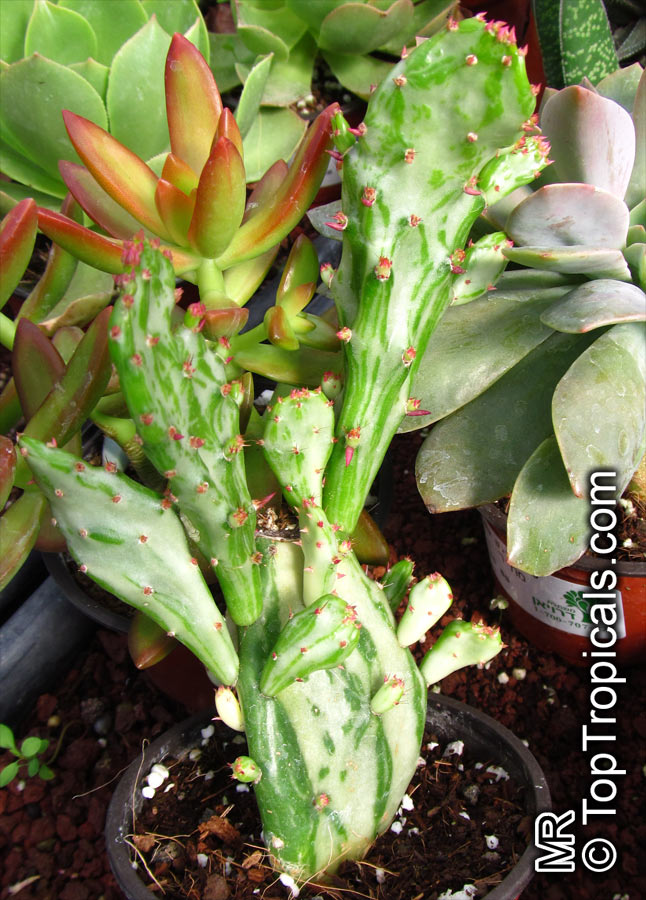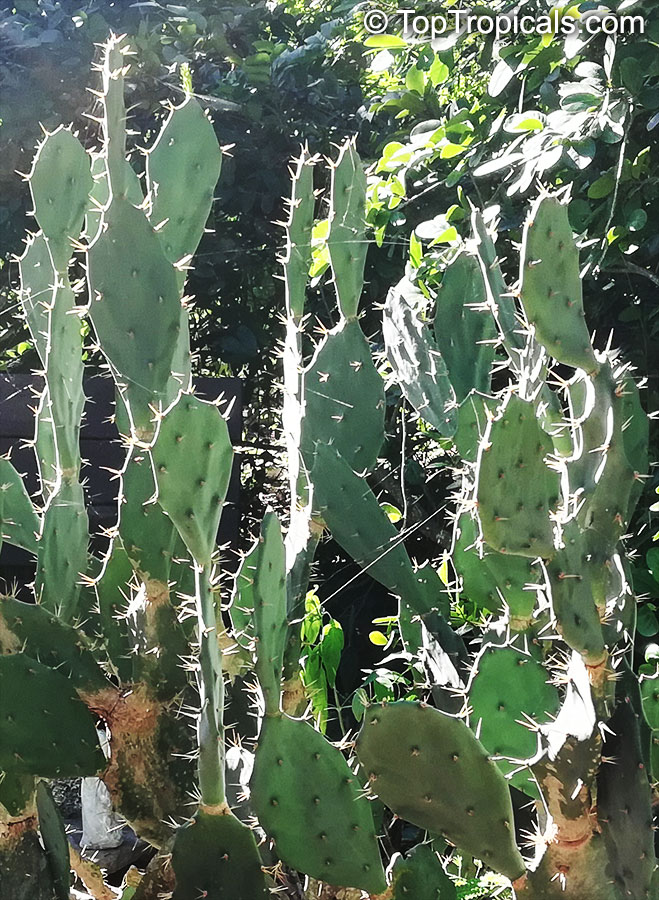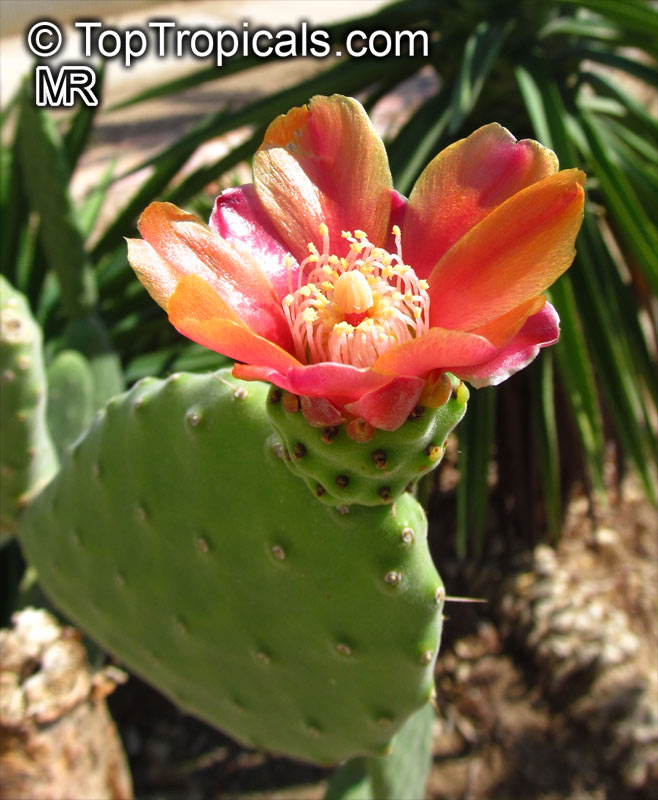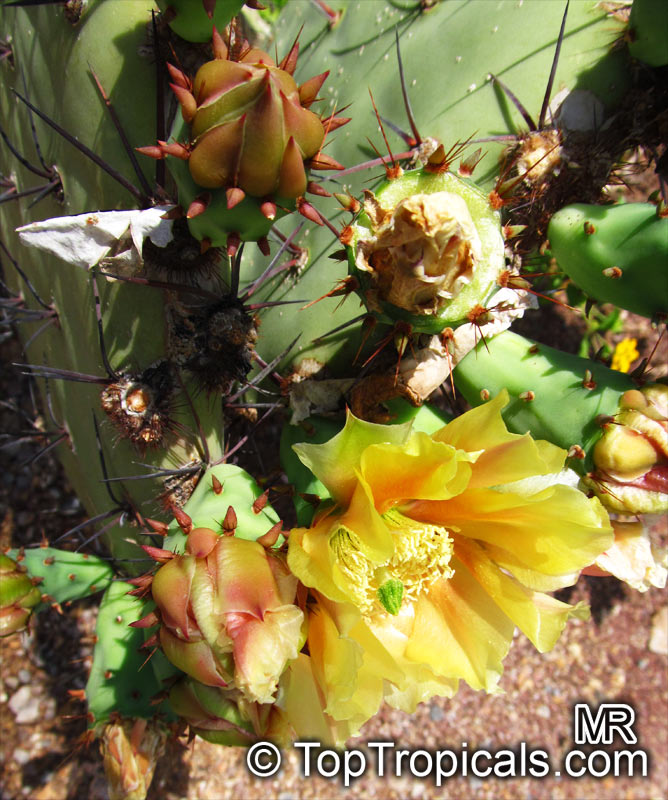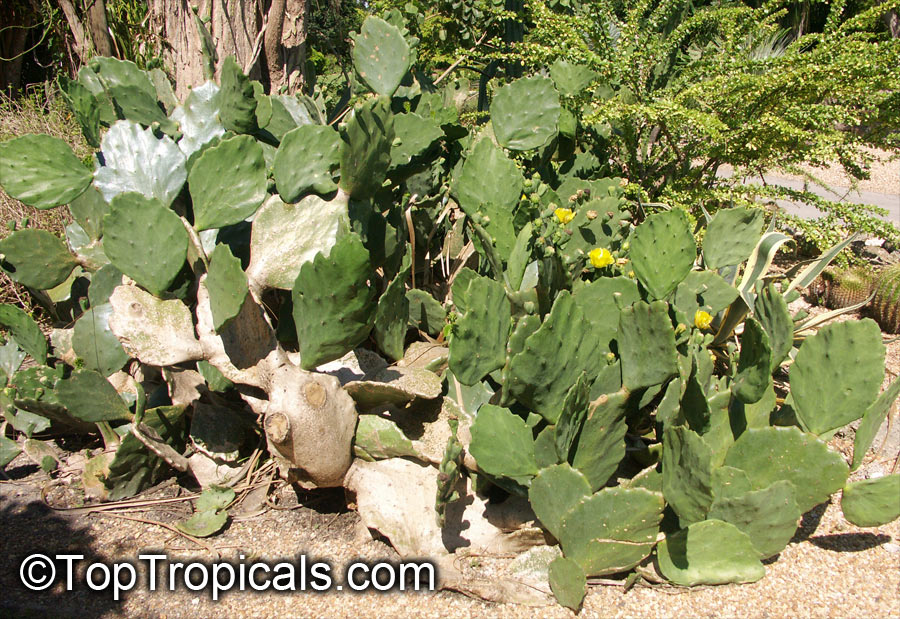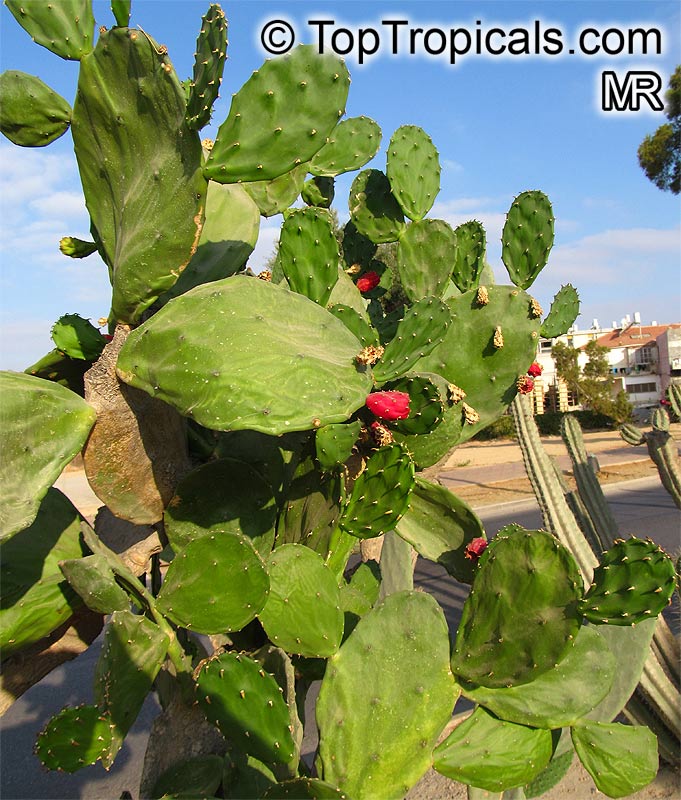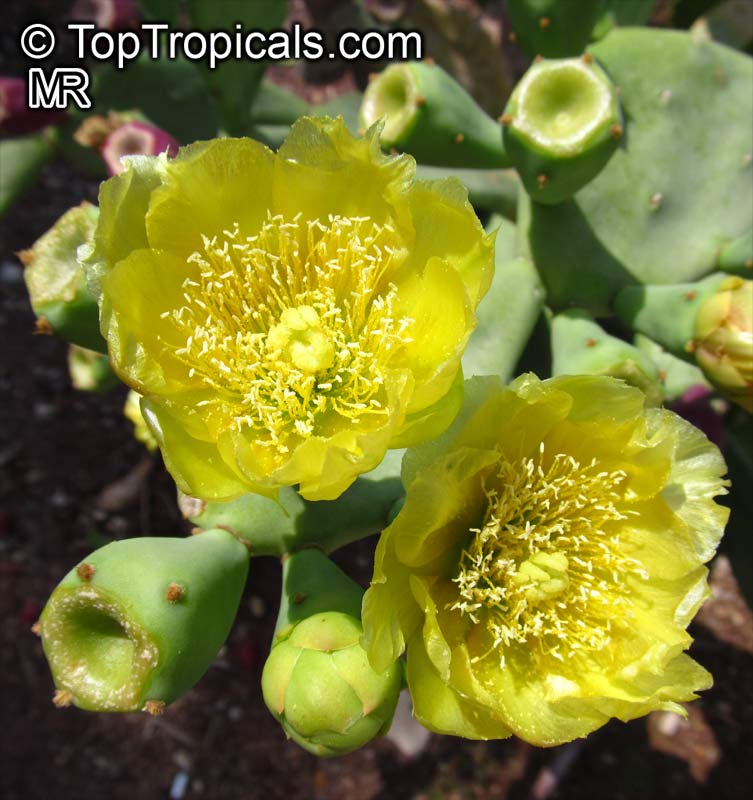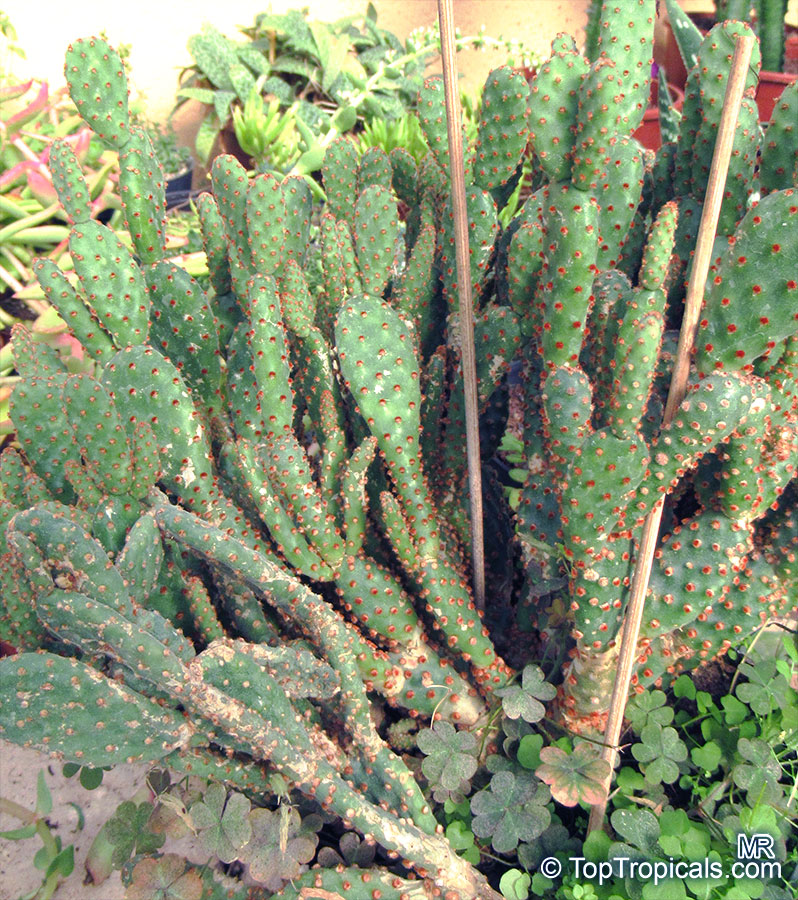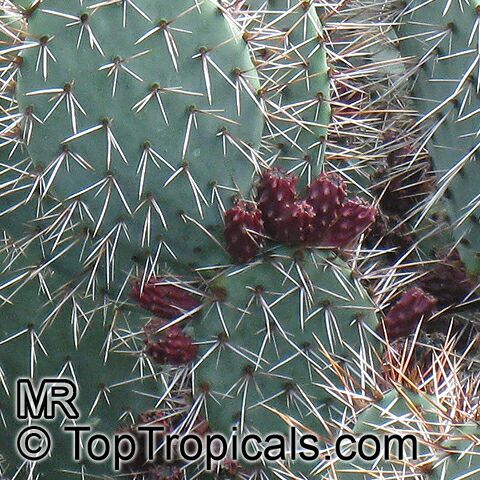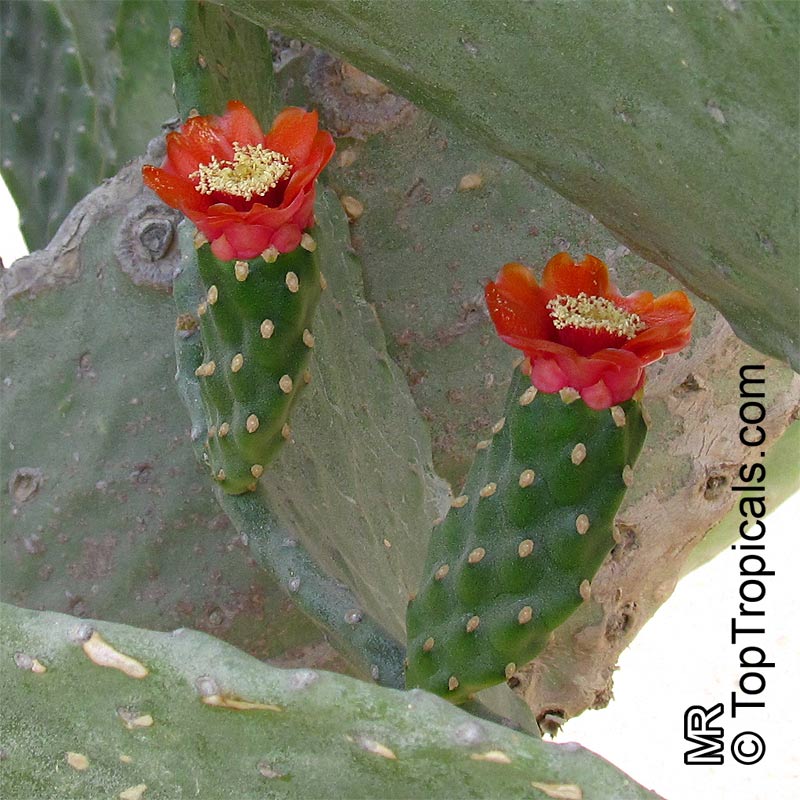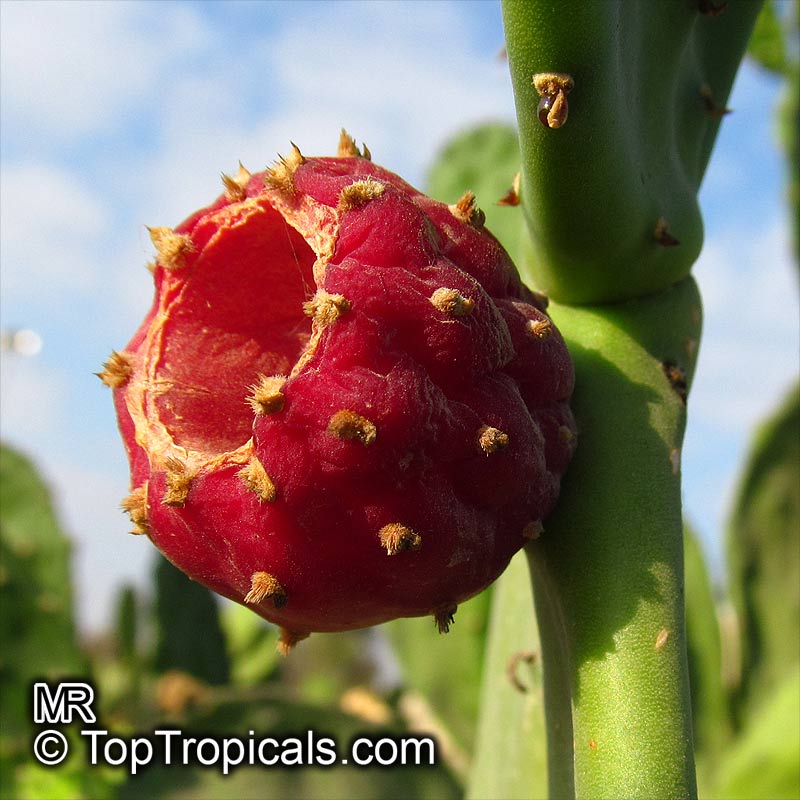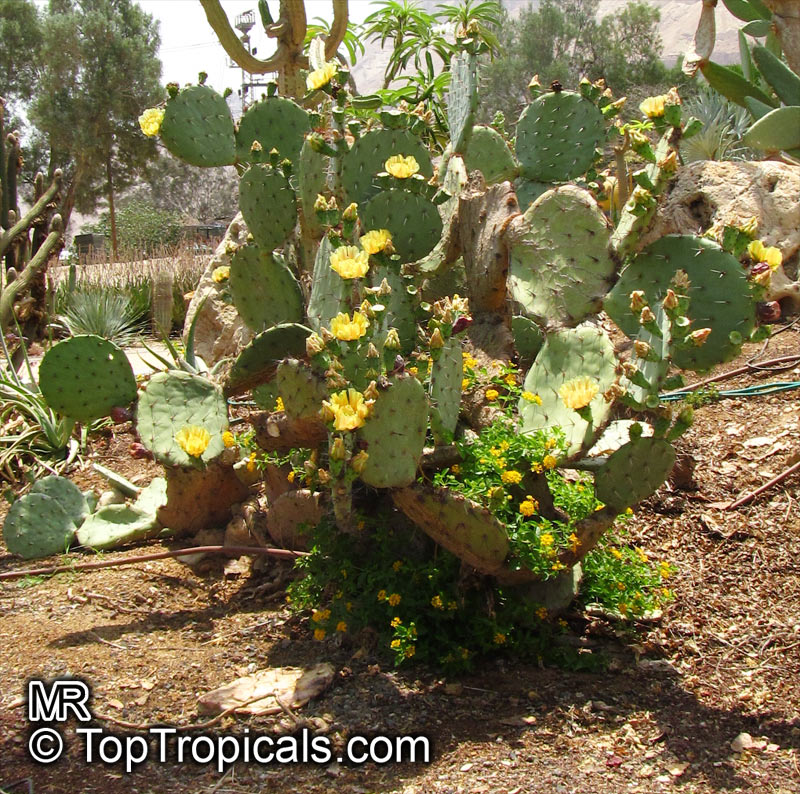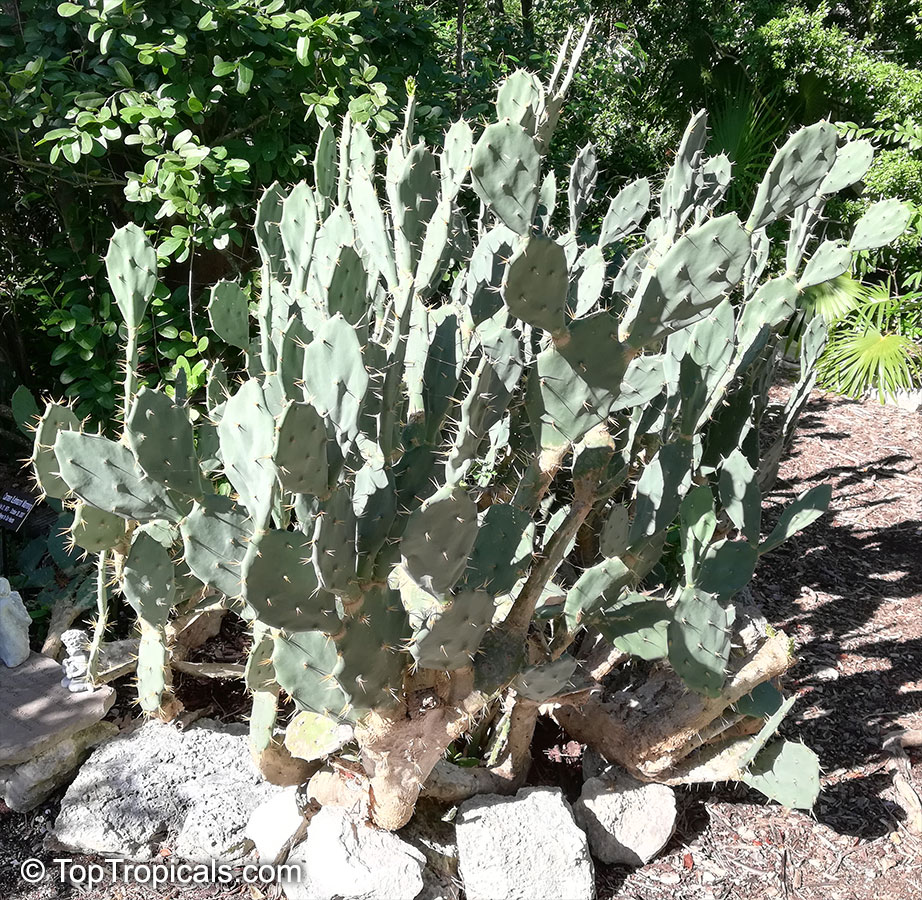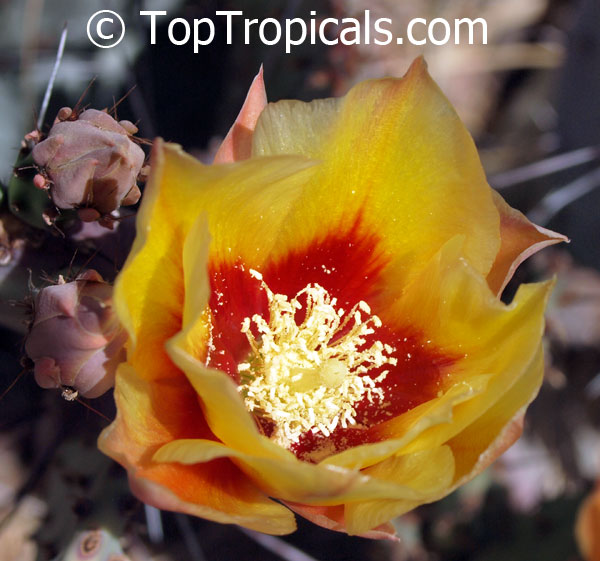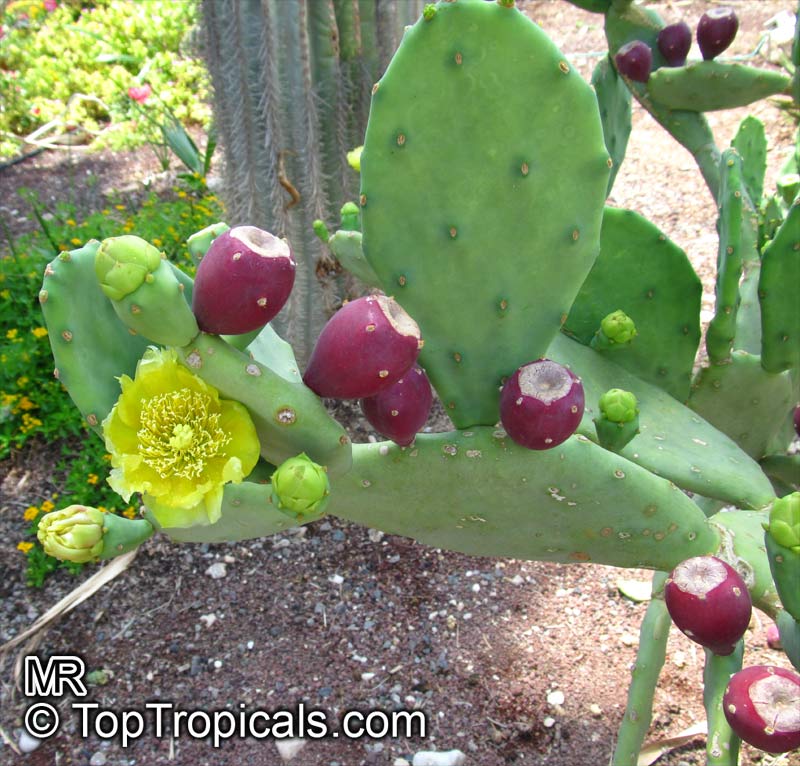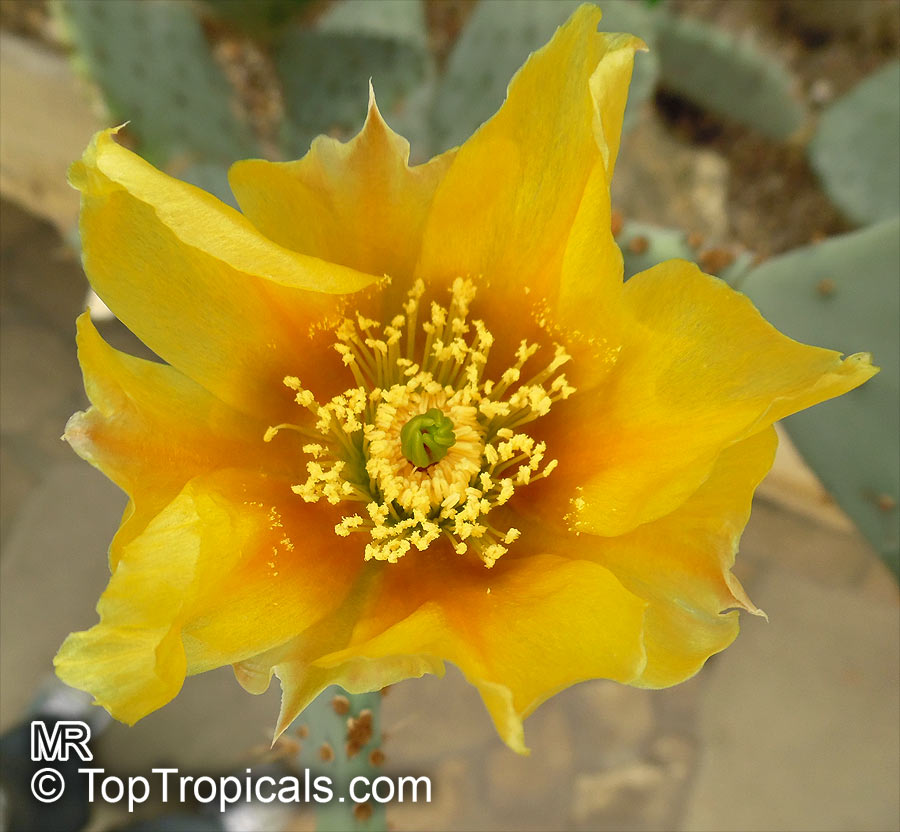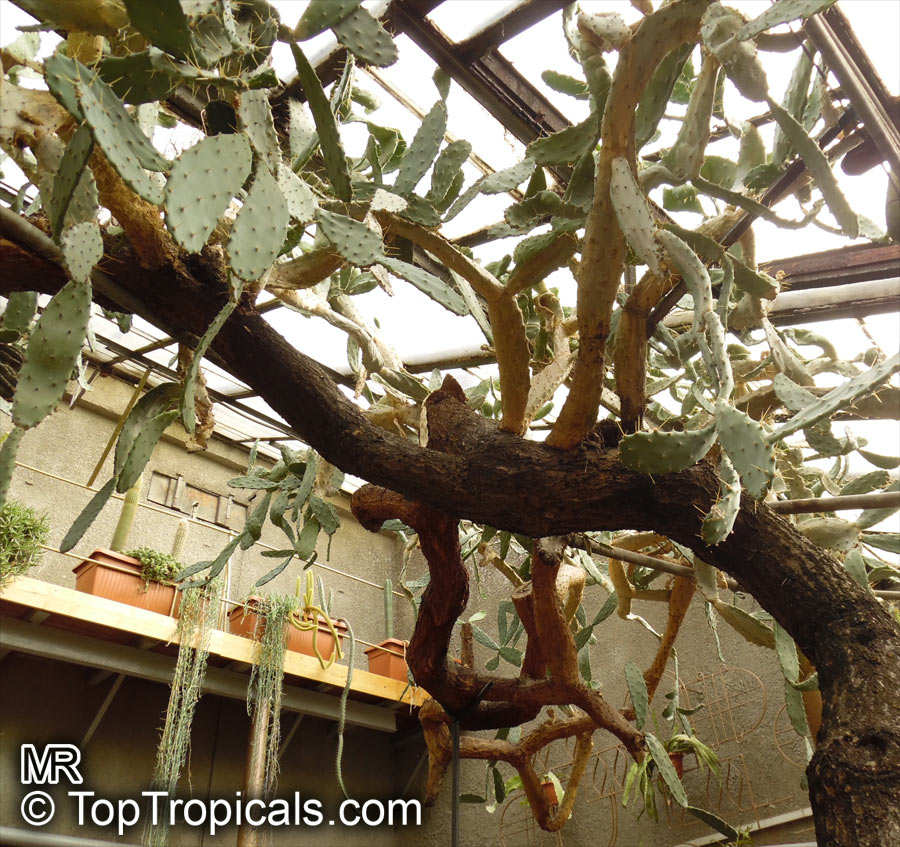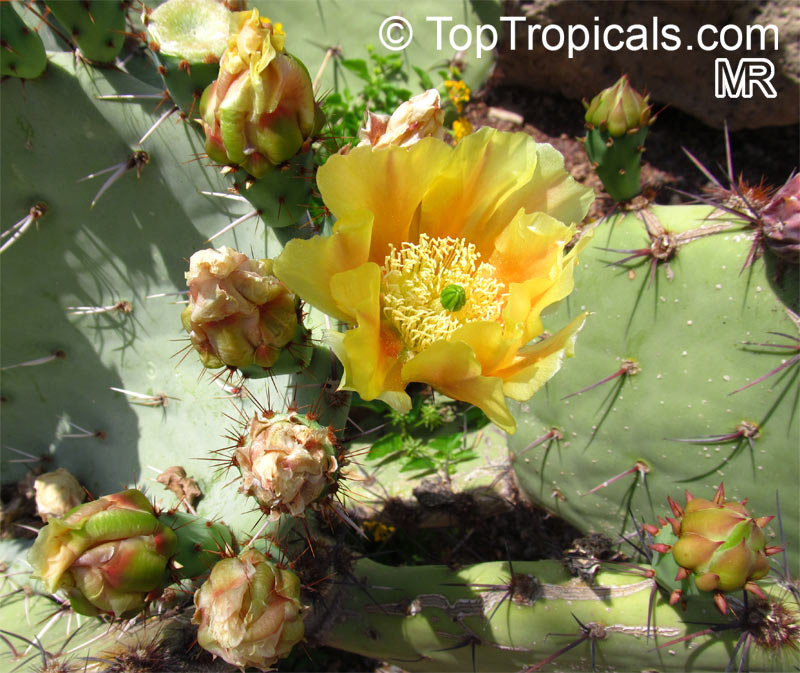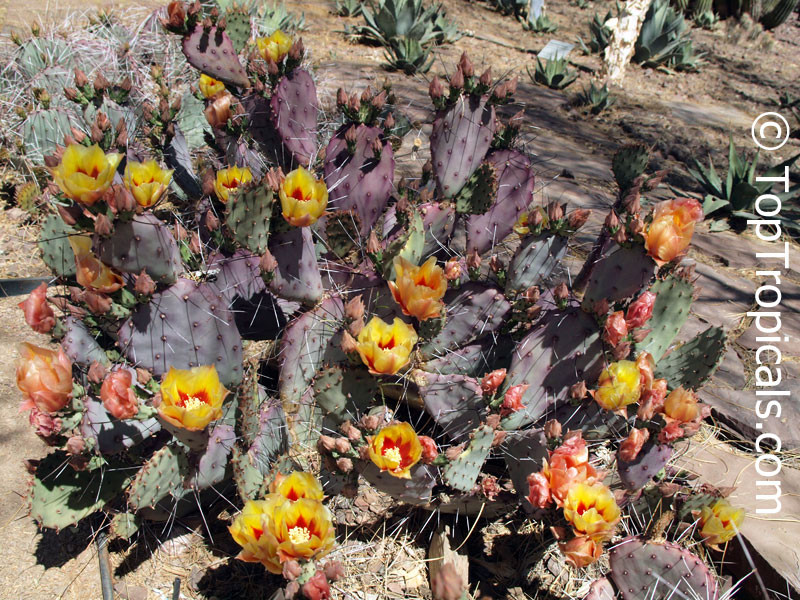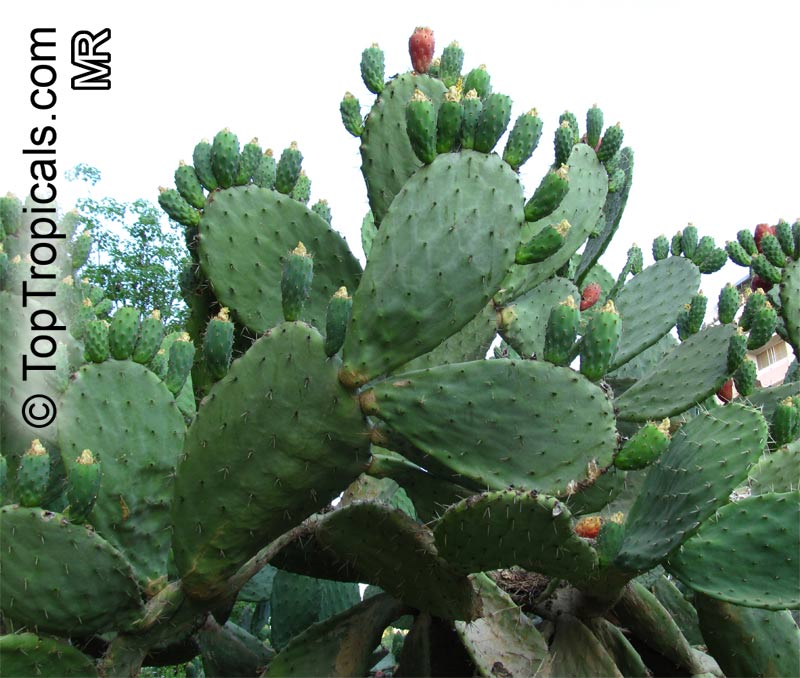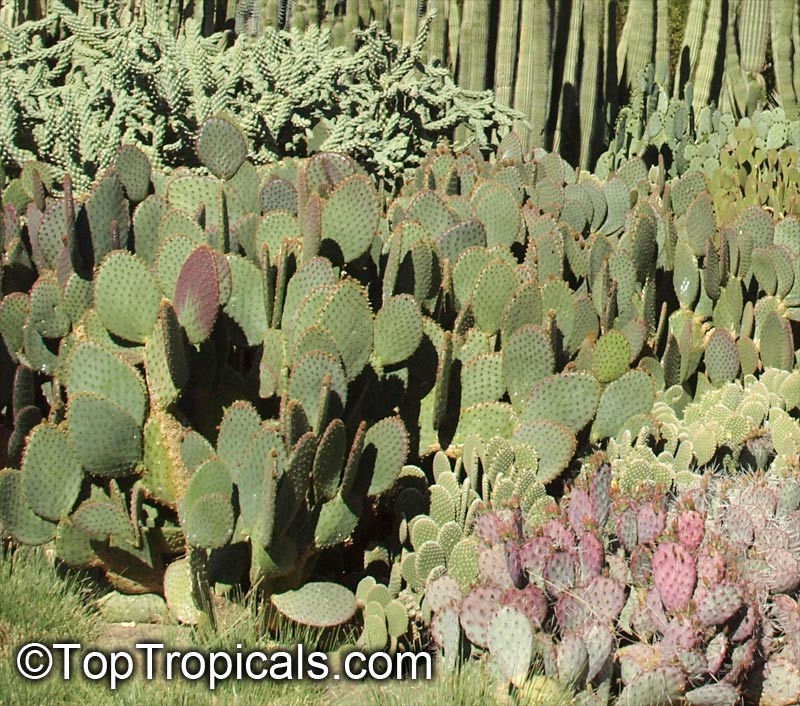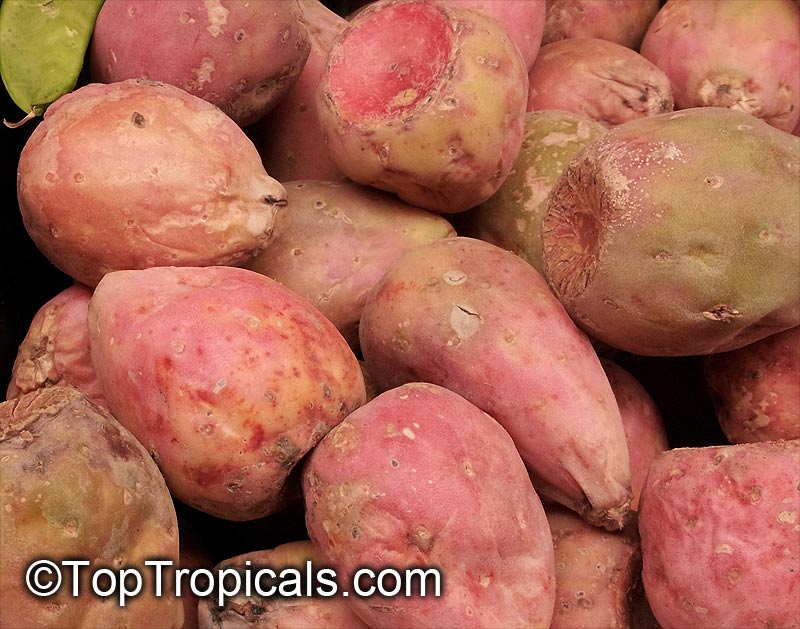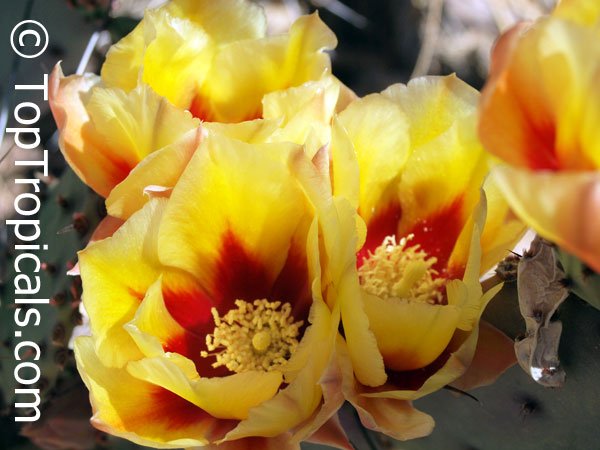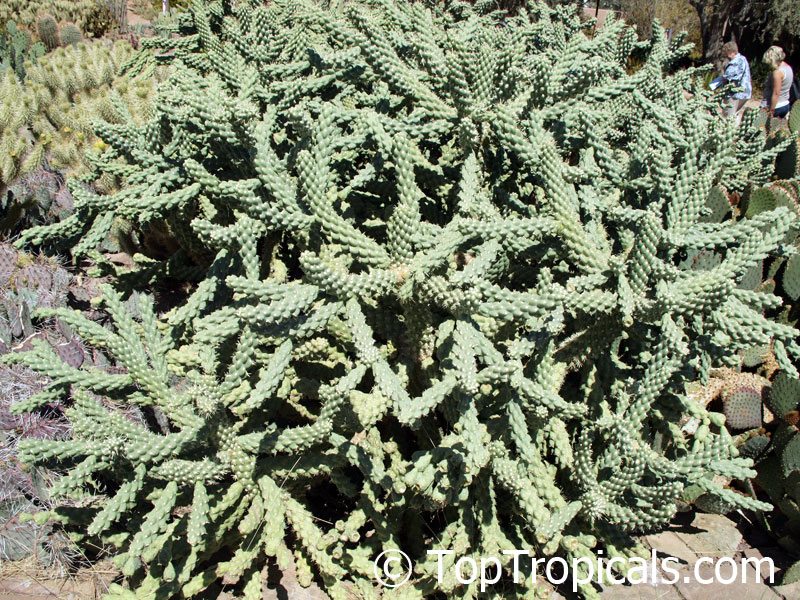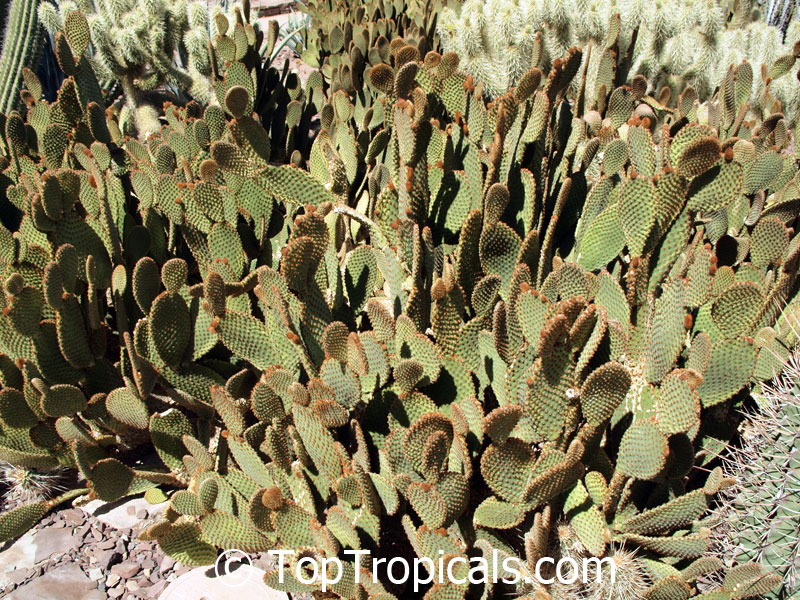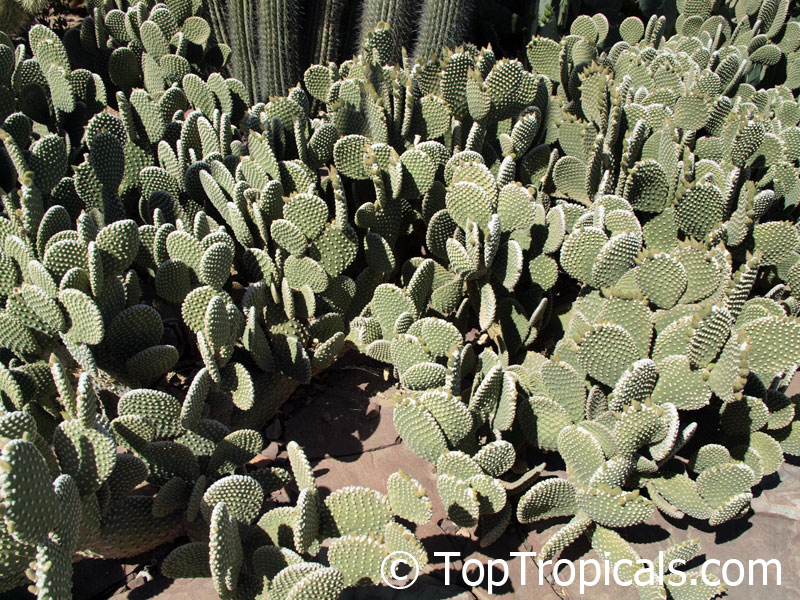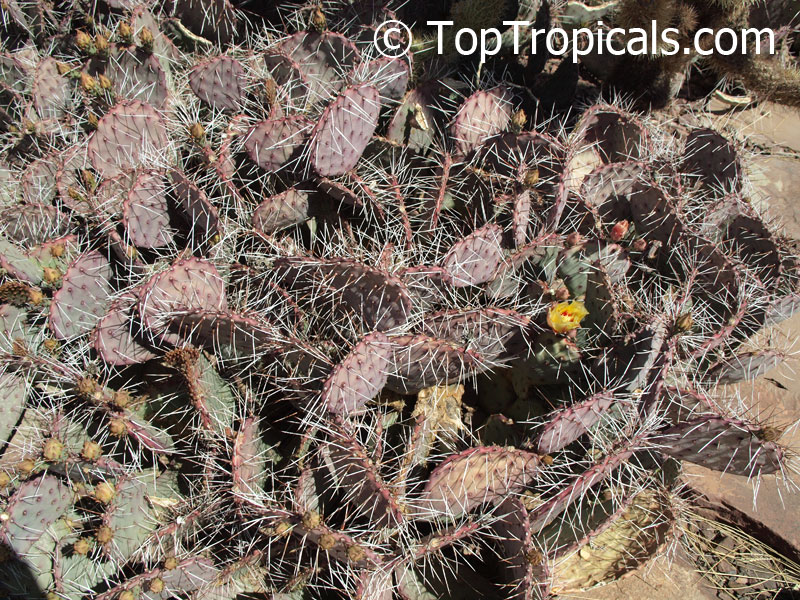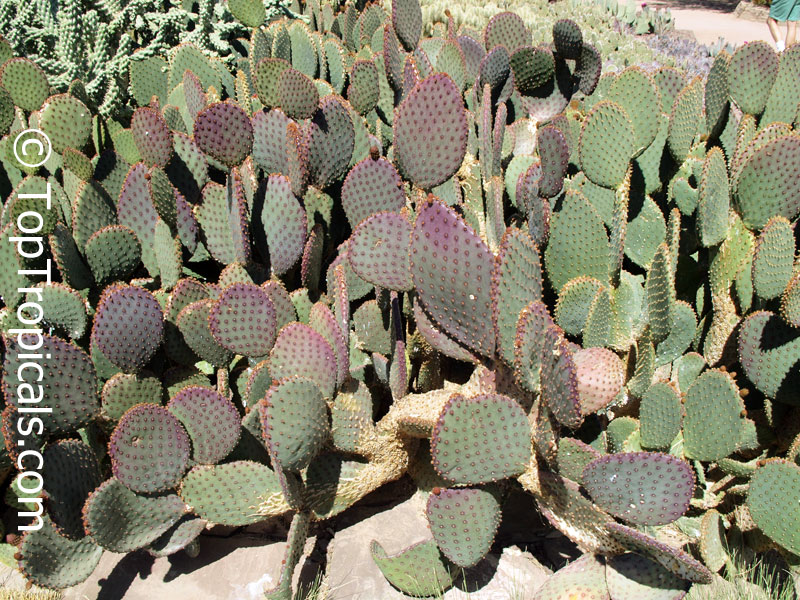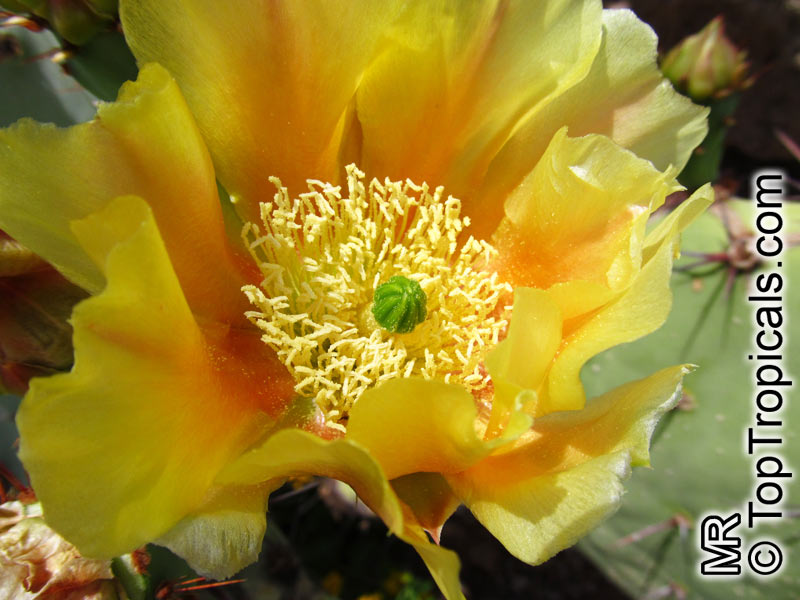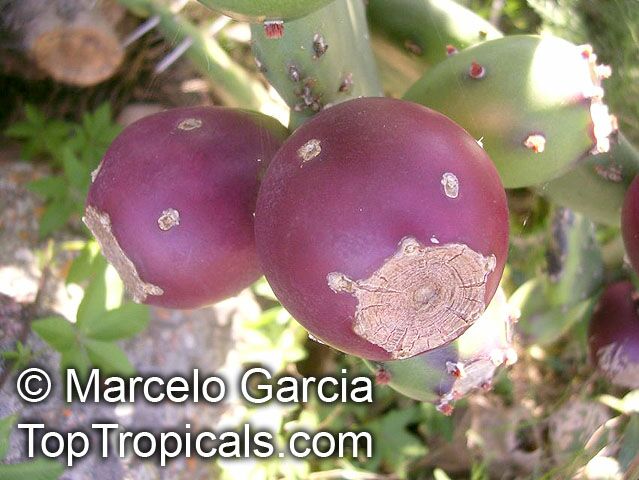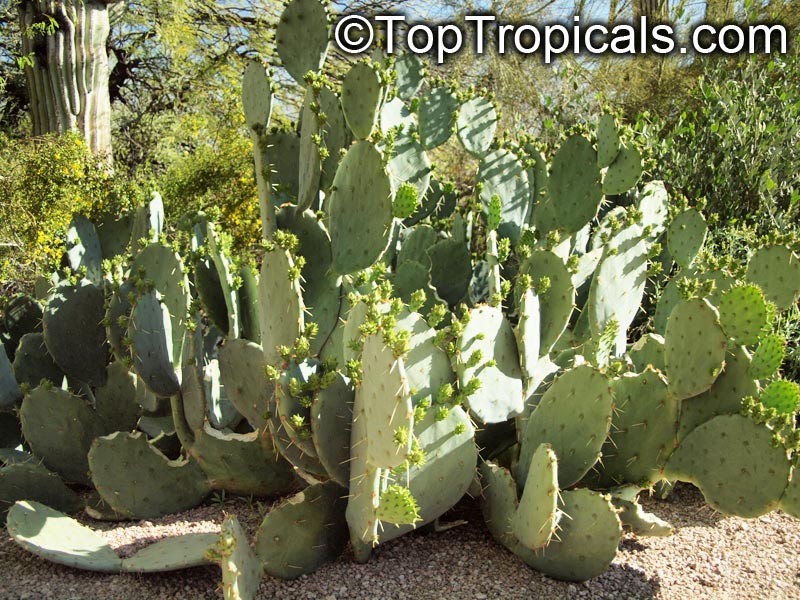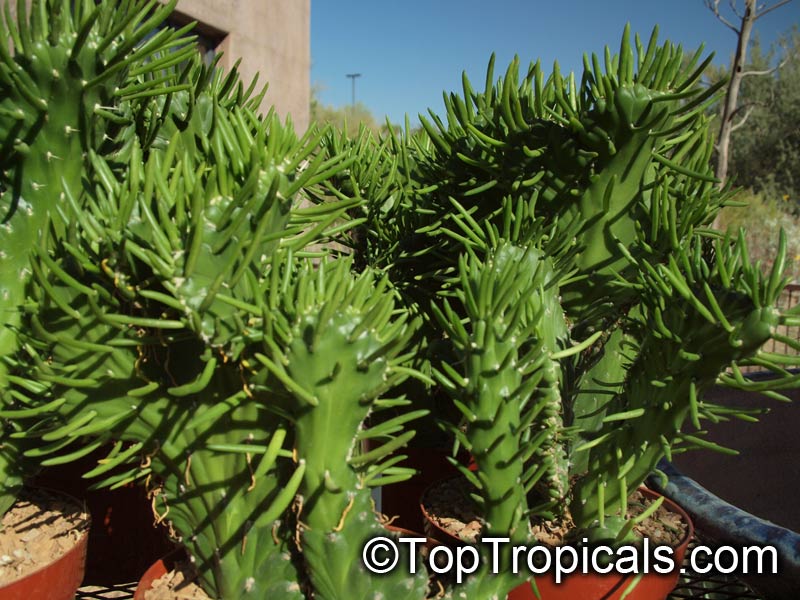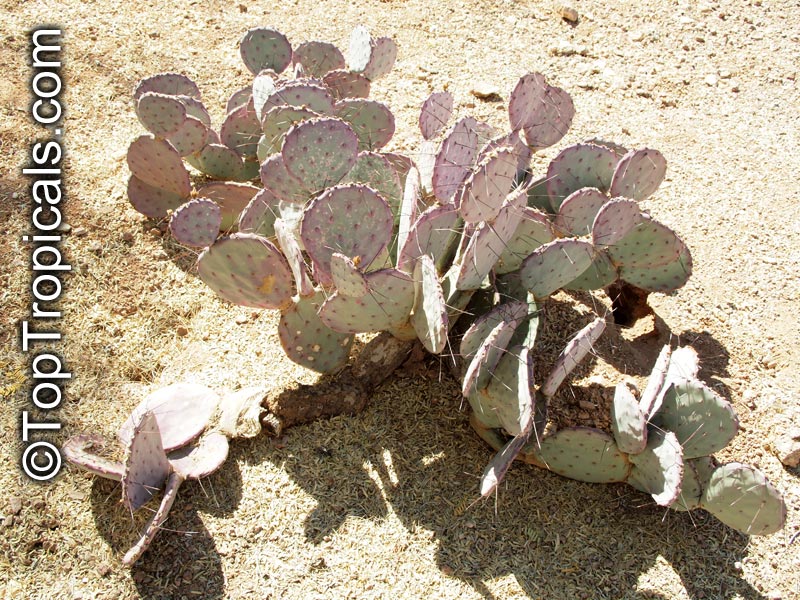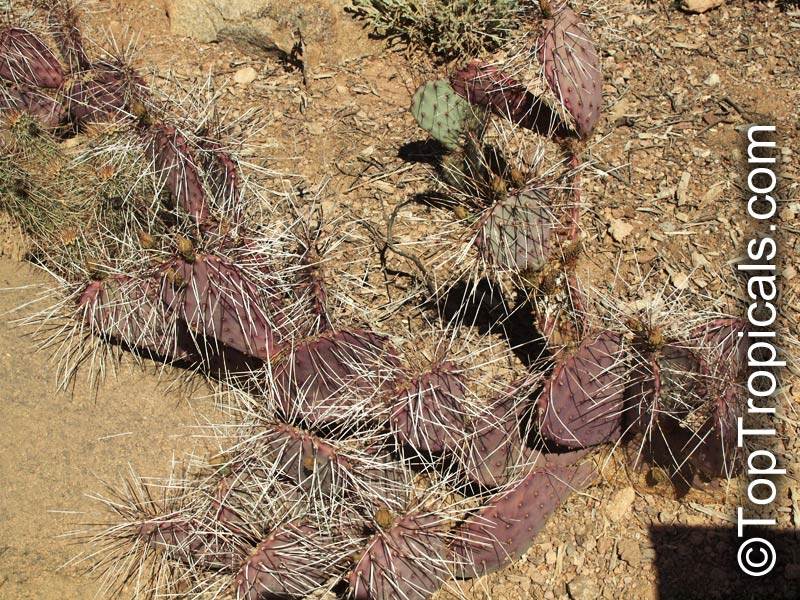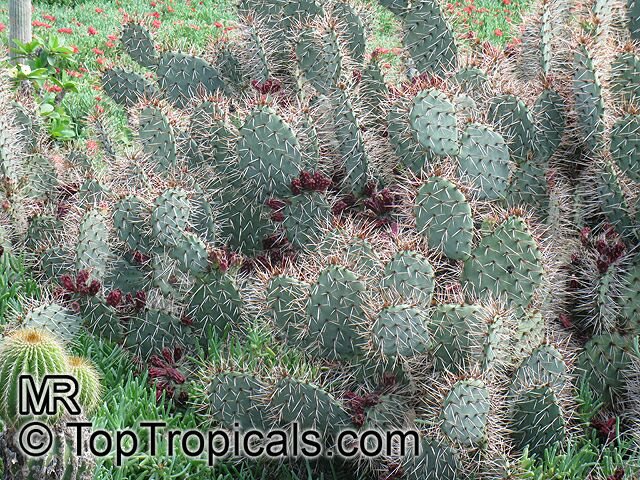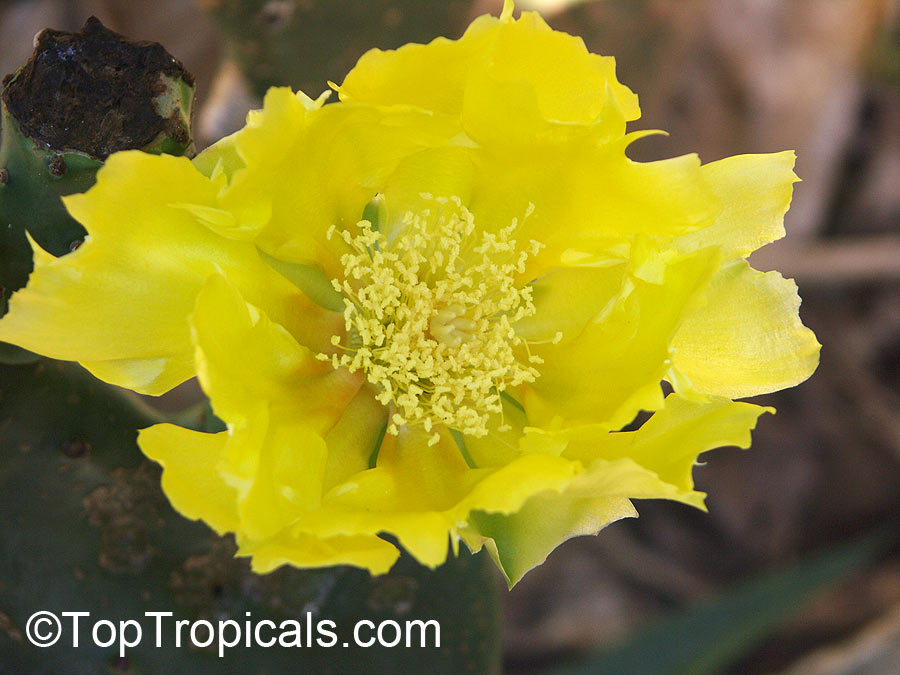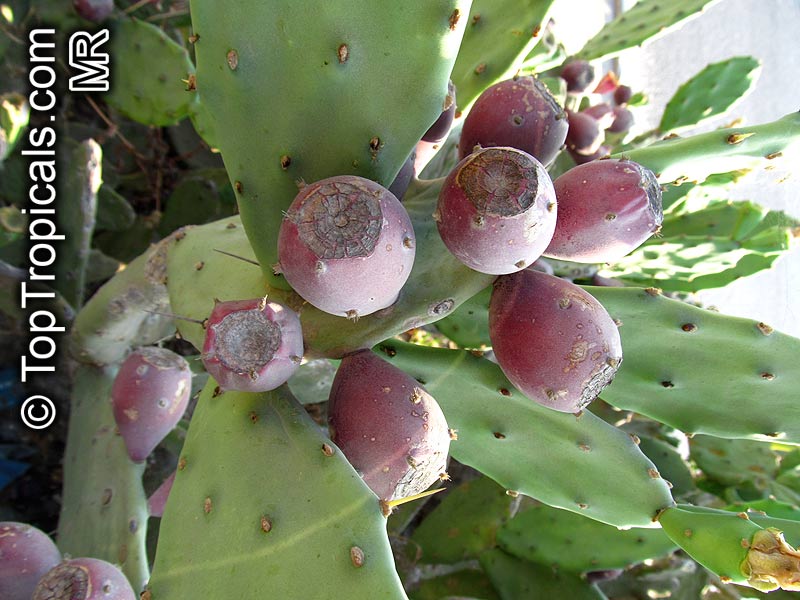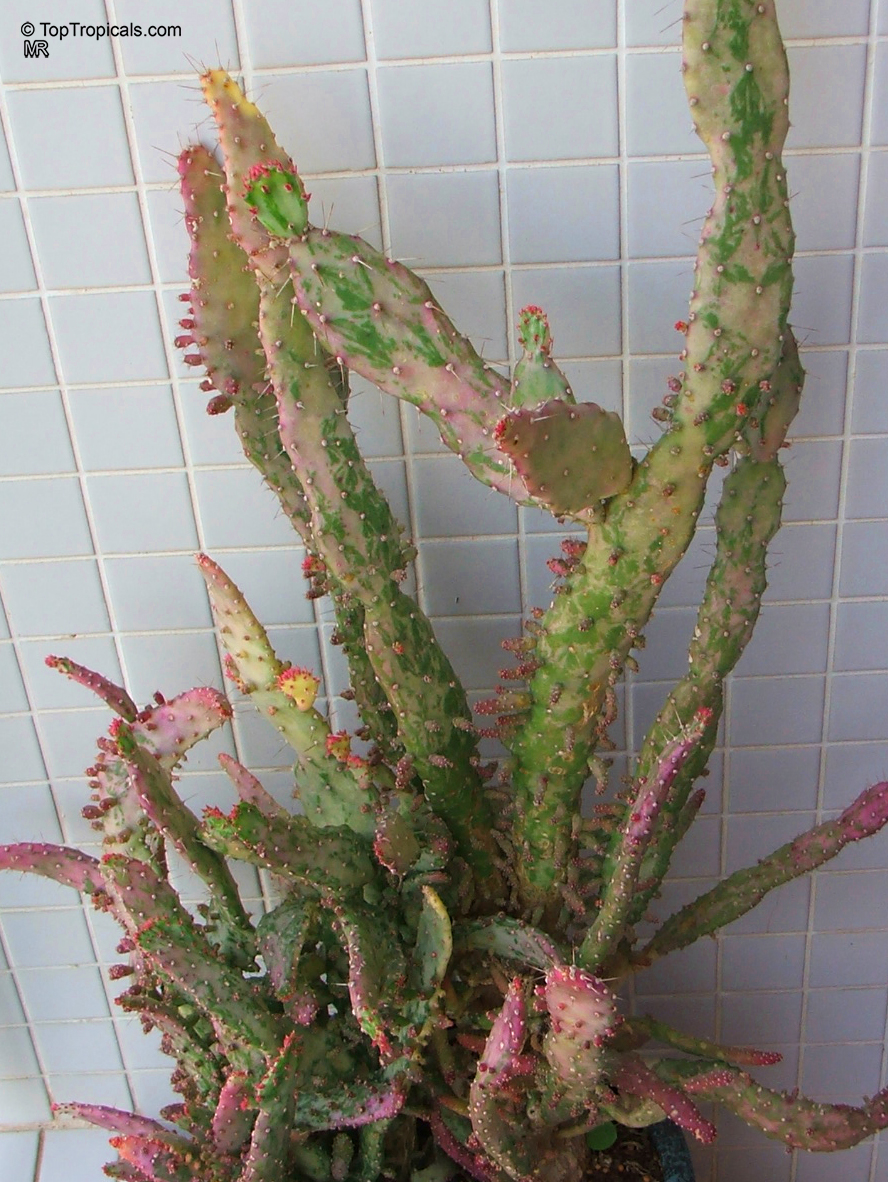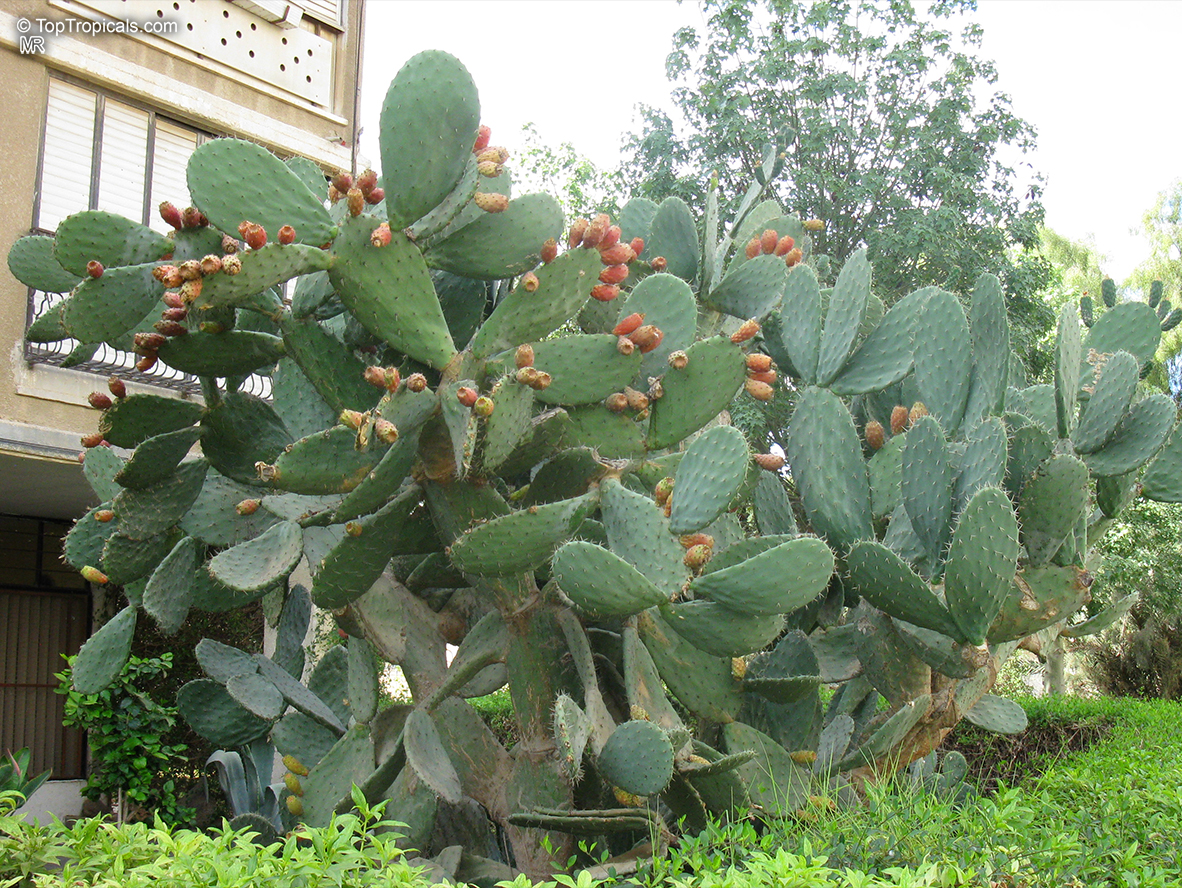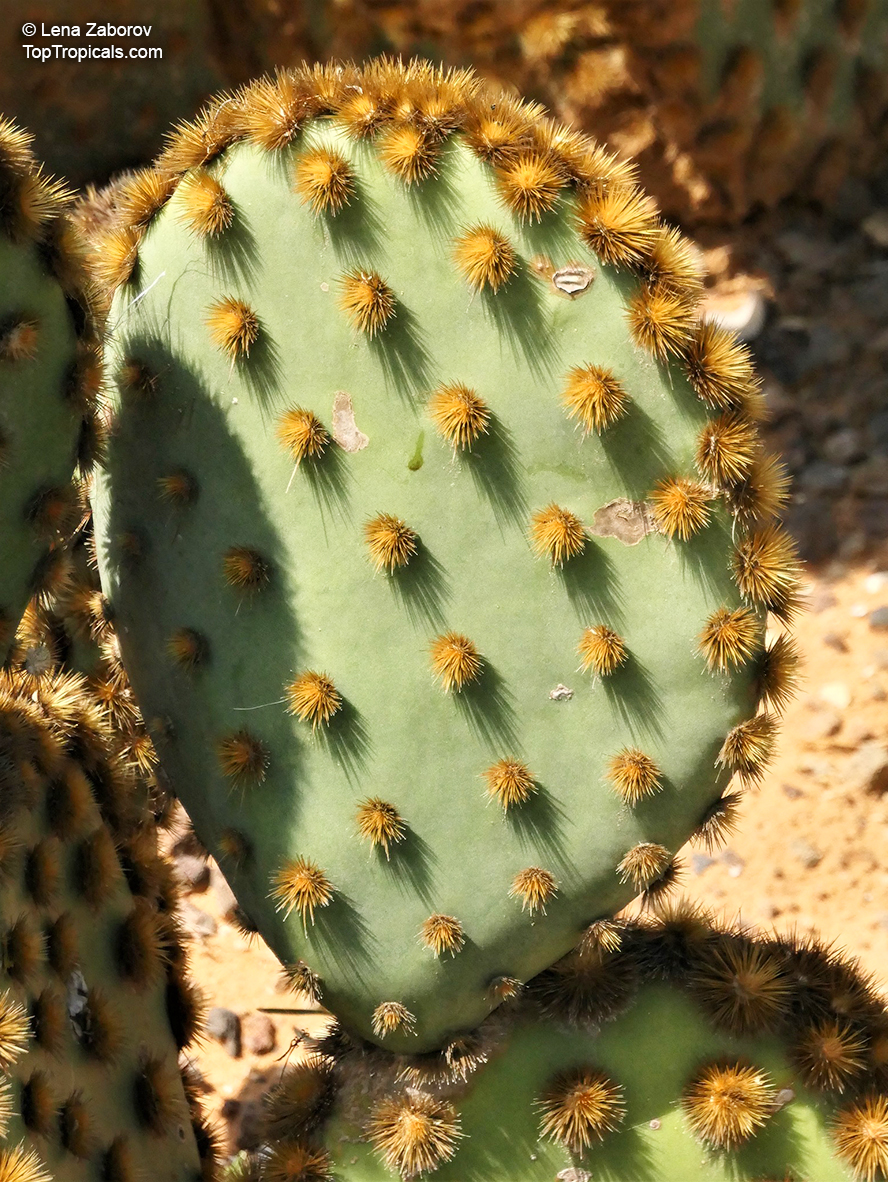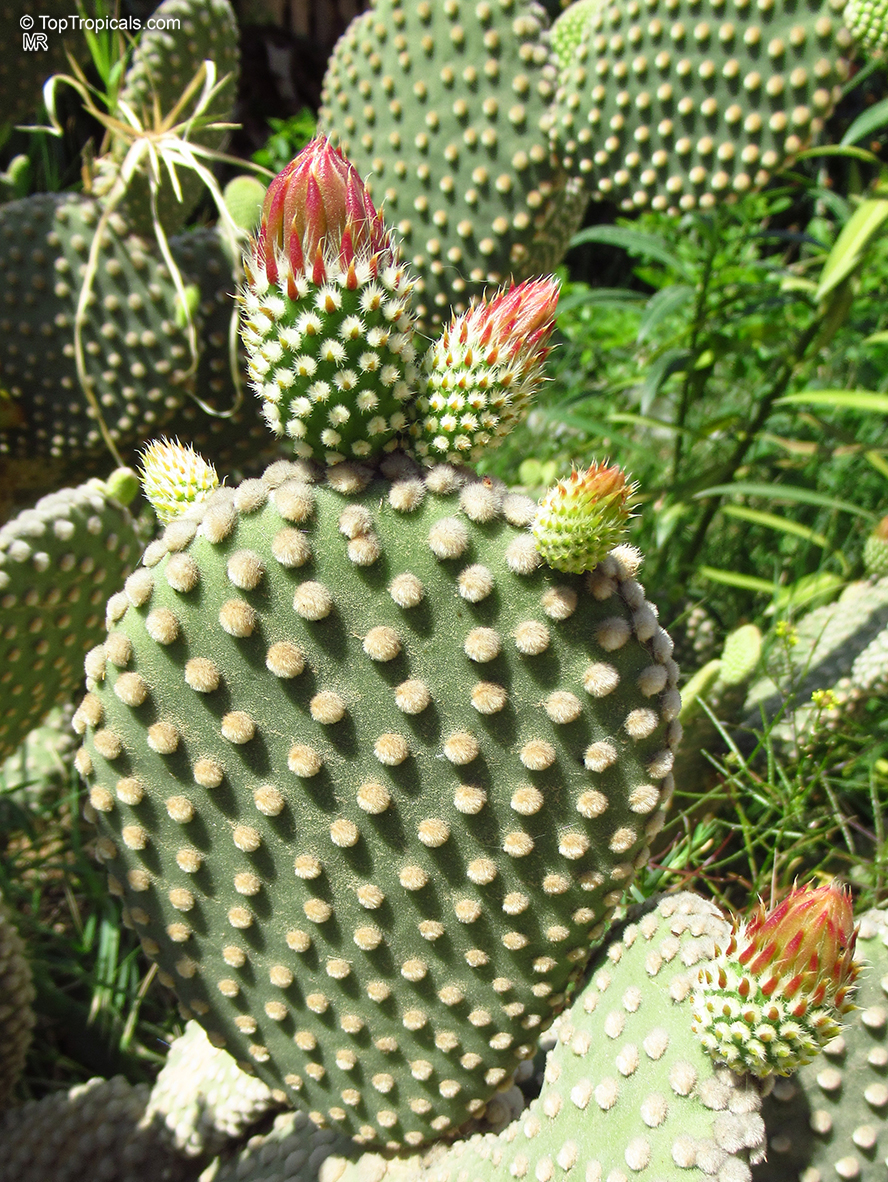Opuntia sp.
Prickly PearFamily: Cactaceae










Opuntia (Prickly Pear) is a massive genus of cacti that range in size from miniature plants of 2in to plants that are 20ft tall. Opuntia can grow in various habitats, including full sun and dry to part shade and moist. The plant requires well-drained soil and sufficient water during growth but must dry out before watering again. It is best to use a soil and sand mix to ensure proper drainage.
It is grown in USDA hardiness zones 9-11. Some species of Opuntia can tolerate much colder temperature, however, in colder climates, it is advisable to grow the plant in a container and move it indoors when the temperature approaches freezing.
Opuntia is highly tolerant of poor soil and requires minimal fertilizers. However, the plant responds well to additional nutrients. The plant produces beautiful flowers in various colors, such as red, crimson, vinous, yellow, and orange, which can attract insects, birds, and hummingbirds, providing them with food and nectar. Opuntia is known for its medicinal properties and was used in the past for ethnomedical treatments.
The fruit is also big and generally edible.
Similar plants:
- Brasiliopuntia brasiliensis, Opuntia brasiliensis (Brazilian Prickly Pear)
- Consolea rubescens, Opuntia rubescens (Road Kill Cactus)
- Cylindropuntia leptocaulis, Opuntia leptocaulis (Desert Christmas Cactus, Desert Christmas Ccholla, Pencil Cactus)
- Opuntia cochenillifera, Nopalea cochenillifera, Opuntia nuda (Cochineal Cactus, Warm hand, Velvet Opuntia, Nopales Opuntia, Nopal Cactus)
- Opuntia macrocentra, Opuntia santa-rita, Opuntia violacea var. santa-rita (Santa Rita Prickly Pear)
- Opuntia microdasys (Angel's-wings, Bunny Ears Cactus, Bunny Cactus, Polka-dot Cactus)
- Opuntia phaeacantha, Opuntia engelmanii (Prickly Pear)
- Opuntia rufida (Prickly Pear)
- Opuntia tomentosa (Tree Pear, Velvet Opuntia)
